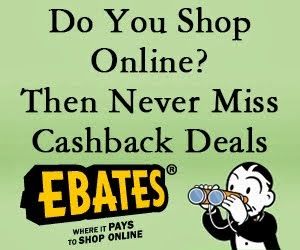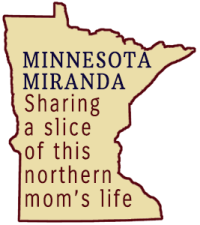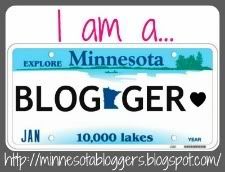This morning I logged on to our local newspaper website and found a great article and had to share with you immediately. For years I have been denouncing energy drinks and refuse to buy them for my kids. I can’t stand them and I am trying to teach my children the importance of healthier choices.
I was able to stop Sherman from drinking “Crack in a can” but he still drinks 5 hour energy occasionally, hopefully he can kick that shit too! Ok So here is the article courtesy of DL Newspapers and DL Online.
Do you know what your teen is drinking? Energy drinks, alcoholicbeverages pose as soft drinks
By: Tracy Frank, INFORUM, DL-Online
Do you know what your teenager is drinking and how that drink might be affecting him or her?Sure, with childhood obesity on the rise, there are concerns that with 290 calories and 90 mg of caffeine in a 20-ounce bottle of Mountain Dew, soft drinks are wreaking havoc with teens’ health.But with a spectrum of varied energy drinks on the store shelves, there are hidden dangers for teens that that parents might not even know about – from alcoholic beverages that look like soft drinks to how energy drinks interact with prescription medications.Energy drinksComing in eye-catching cans and with fun names like Monster, Red Bull, Rockstar and AMP, energy drinks have grown in popularity among teens, but doctors say children and adolescents should keep away from these drinks that are often loaded in caffeine.Dr. Michael Bergeron, a Sanford Children’s Health Research Center senior scientist, professor in the Department of Pediatrics at Sanford School of Medicine at the University of South Dakota and director of the National Institute for Athletic Health & Performance, helped write the American Academy of Pediatrics policy statement on sports and energy drinks.Energy drinks can make adolescents jittery, create problems with concentration and can interfere with neuromuscular functions by replacing good-quality calories and causing kids to lose out on important nutrients, Bergeron says.If teens are using the drinks to stay awake, they can interfere with the children’s sleep, perpetuating the need for the drink and a subsequent loss of sleep, Bergeron says.And in a worst-case scenario, Bergeron says, “there is a potential of stimulating to the point of having a cardiac-related event.”The caffeine contained in some energy drinks can exceed 500 mg, equivalent to 14 cans of caffeinated soft drinks and high enough to result in caffeine toxicity, according to the American Academy of Pediatrics.Some energy drinks also contain other stimulants like guarana, green tea, yerba mate, yohimbine, bitter orange (synephrine or octopamine), vinpocetine, 5- hydroxyl trypophan, methylphenylethylamine (5-HTP) and ginseng, according to NSF International, a testing and certification organization committed to improving and protecting public health.Combinations of those ingredients can be associated with serious cardiovascular issues and can potentially exacerbate or initiate manic episodes, NSF International stated.Energy drinks can also interact with medications and over-the-counter drugs, both Bergeron and NSF International say.“Caffeine and other related plant extracts are stimulants,” Bergeron says. “The effect on a young body is not well-researched but certainly can have some negative effects. Combine that with medication, and there is a problem.”A big problem, if the ingredients in energy drinks can dull or negate the desired effects of prescription medications.According to NSF International:* 5-hydroxy tryptophan could make anti-depressant medications inactive.* Vinpocetine could cause serious drug interactions with aspirin, Plavix, Tidid, Pentoxifyline, vitamin E, garlic and gingko. When taken with the drug Coumadin, it thins the blood and could cause excessive bleeding.* Yohimbine can lower blood pressure too much and can make the blood pressure medication inactive when used with tricyclic antidepressants, buproprion, phenothiazines, clonidine and other drugs for lowering blood pressure, amphetamines or any other central nervous system stimulants.Eating cheese or red wine while taking yohimbine can also result in unsafe high blood pressure levels.Bergeron says the general public may be confused about the differences between sports and energy drinks.Energy drinks often contain caffeine and other stimulants that come in the forms of herbs.A sports drink is typically water, carbohydrates and electrolytes.Young athletes can benefit from them, but the average child engaged in routine physical activity doesn’t need them and frequently drinking caloric sports drinks can increase the risk for obesity, according to the American Academy of Pediatrics.“There are certain times where a sports drink may be appropriate, but I would say that for a child or adolescent, that there’s really no time that you should be encouraging consumption of energy drinks,” Bergeron says.Alcohol in disguiseMike Clower, a school resource officer with the Fargo Police Department, says some kids are consuming alcohol in disguise and their parents don’t even realize it because the drinks look like common, non-alcoholic energy drinks.For instance, there’s a drink called JOOSE that looks like an energy drink, but it contains anywhere from 6 to 12 percent alcohol.The drinks come in flavors like green apple, watermelon and fruit punch, and the bottles and cans are decorated in bright, psychedelic colors.“I always tell parents, look at those cans,” Clower says. “Your kid could be standing right in front of you drinking alcohol, and you wouldn’t even know it.”Apparently, there’s enough confusion that the United Brands Company, Inc., which produces JOOSE, felt the need to distinguish itself by proclaiming in one of the first lines on its website, “JOOSE is not an energy drink; it is a flavored, beer-like beverage for adult enjoyment.”The company did not respond to a request for comments for this story.In 2010, the U.S. Food and Drug Administration warned United Brands Company that the caffeine added to its malt alcoholic beverages is an “unsafe food additive.”The USDA said there is evidence that the combinations of caffeine and alcohol in the products pose a public health concern, caffeine can mask some of the sensory cues people rely on to determine their level of intoxication, and “the consumption of beverages containing added caffeine and alcohol is associated with risky behaviors that may lead to hazardous and life-threatening situations.”A similar product, called Four Loko, received heavy national criticism for its combination of alcohol and caffeine, was blamed in multiple deaths and was banned from being sold in some states, according to The Week, a political news magazine.Phusion Products, which makes Four Loko, announced last November that it would remove caffeine and other stimulants from the drink.And it’s not just drinks that can disguise alcohol. Whipped cream is also being sold with alcohol in it, and it can be bought locally, Clower says.CREAM and Whipped Lightning are both alcohol-infused whipped creams that come in various flavors and contain anywhere from 30 to 37 proof alcohol.“They’re putting alcohol in all sorts of different items and they’re disguising it,” Clower says. “You tell me what market are they trying to target.”
**You can find the article and more local news here at http://www.dl-online.com/ **
Please Take A Moment, Click to Vote for My Blog!







It really is soooo scary, isn’t it? I can’t believe some of them have the same amount as 14 regular sodas! Crazy. I won’t even drink them. I hate to think of younger people drinking them. Thanks for sharing. And thanks for visiting the Sit and Relax hop again!
Michelle
Heartfelt Balance Handmade Life“
Thanks for the info! New follower from the not so moody blog hop! Hope you’ll visit http://www.stacyssavings.com!”
Wow! My daughter loves these things. Maybe I should try to discourage her from drinking them! She just left for college and has been telling me a lot that she’s had one to drink. Could be worse, of course, but could be a lot better too!!
BTW, I’m visiting from the “Time Out Tuesday” blog hop. Your blog is awesome! I’m your newest follower. I’d love for you to return the favor! Thanks!!
Totally Reinventing Me“
Thank you for posting this! Many parents or teens dont understand the dangers of these drinks. These drinks speed up the heart and drop you like a ton of rocks. BAMMM!!!! Once you drink it, its too late. Hang on for the ride… Why not get energy the healthy way? I am a follower for life. LOL
My teenage son likes Monster drinks,but he’s only allowed to have one every now and then. I definitely don’t allow him to drink them like water. I like them too but I also only drink them in moderation.
I don’t think these drinks are healthy for anyone. Teens and younger kids are even more vulnerable to the ill effects of these energy beverages. I’m glad people are sharing this knowledge to parents out there!
Sarah @ made in usa challenge “
I am anti soda’s over here and fortunately my oldest is not a fan, my youngest is allowed pink lemonade in restaurants! But I am always amazed at the children who visit and will help themselves to several cans from my fridge while they are here – CRAZY!
Two points of view here:
1. Kids need energy drinks like a hole in the head, it isn’t about the need from an energy thing, it’s COOL to drink energy drinks at 9AM in the morning, giving the impression they were out partying all night – at 13.
2. I am totally over this whole health things. Kids obesity rates are high but it has more to do with the kids – and their parents- getting off the couch and doing something. I drank Mountain Dew like it was going out of style as a kid, but I was out doors every day and not glued to a TV or computer or video game monitor.